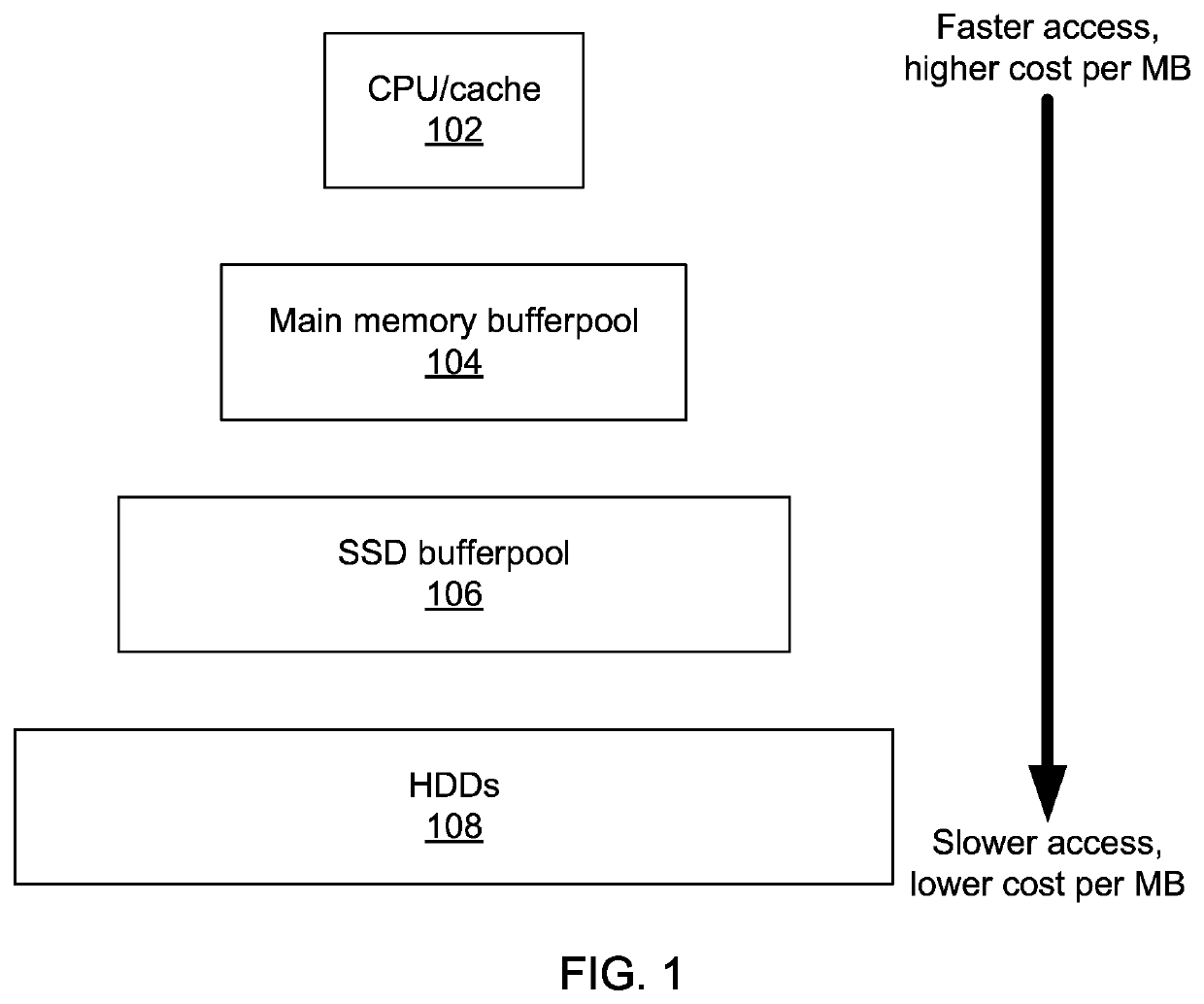Preplaying transactions that mix hot and cold data
a technology of hot and cold data and pre-playing transactions, applied in the field of database management, can solve the problems of reducing the overall system performance, contention for requested records, and hds can be orders of magnitude worse than ssd
- Summary
- Abstract
- Description
- Claims
- Application Information
AI Technical Summary
Benefits of technology
Problems solved by technology
Method used
Image
Examples
Embodiment Construction
[0018]Embodiments of the present invention provide for preplay of mixed transactions, having both “hot” elements stored on fast storage and “cold” elements stored on relatively slow storage, to move data elements from cold storage to a main memory buffer before performing any read / write locks. This allows purely hot transactions to continue to run while cold data elements are being called up.
[0019]Consider a motivating example of a large, online bookstore that executes transactions representing book sales to customers. Both book data and customer data are partitioned (e.g., horizontally) into two categories: hot and cold. Hot customers / books are stored in solid state drives (SSDs), while cold customers / books are stored in magnetic hard drives (HDs). This partition is performed because frequently accessed items are more likely to benefit from faster storage.
[0020]In this example, suppose that the bookstore places performance targets on transactions, with different standards for hot a...
PUM
 Login to View More
Login to View More Abstract
Description
Claims
Application Information
 Login to View More
Login to View More - R&D
- Intellectual Property
- Life Sciences
- Materials
- Tech Scout
- Unparalleled Data Quality
- Higher Quality Content
- 60% Fewer Hallucinations
Browse by: Latest US Patents, China's latest patents, Technical Efficacy Thesaurus, Application Domain, Technology Topic, Popular Technical Reports.
© 2025 PatSnap. All rights reserved.Legal|Privacy policy|Modern Slavery Act Transparency Statement|Sitemap|About US| Contact US: help@patsnap.com



